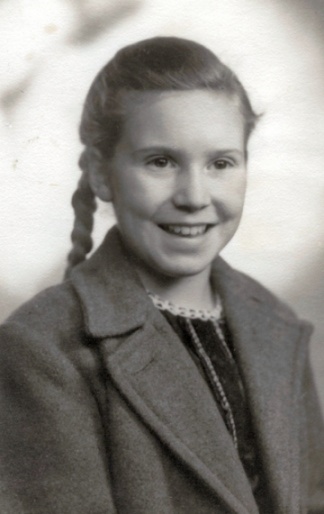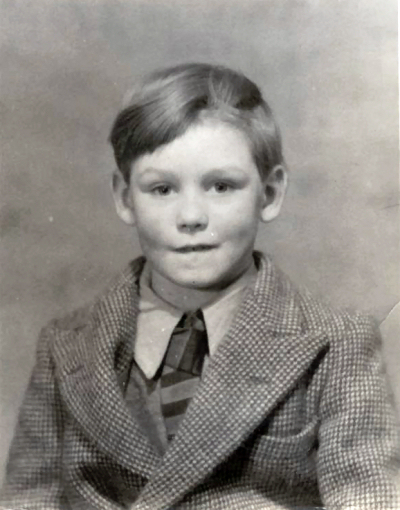By Always Narnian
C.S. Lewis’ Narnian books have been enthralling readers for 63 years, with more than 100 million of the books being purchased. Can you imagine having one of these outstanding books dedicated to you?
The Magician’s Nephew, which is now usually numbered as the first book in the Narnia series, was actually published five years after The Lion, the Witch and the Wardrobe, the original opening book of the series. This novel was dedicated to The Kilmers, a large family that had written to Lewis about his other books in the Chronicles. Lewis told the Kilmers in March of 1954:
“The typescript of your book went off to the publisher last week, though it will not be out till next year. It is called The Magician’s Nephew. You must have often wondered how the old Professor in The Lion, Witch & W could have believed all the children told him about Narnia. The reason was that he had been there himself as a little boy.” [1]
The children faithfully wrote to Lewis for some time and would also send him drawings they had created. In 2004, Nicholas Kilmer noted about the author: “Lewis was absurdly generous in his responses to our letters…We could not believe then, and I still cannot believe, with what care he read and answered our letters, and how successfully he labored to find something in them to respond to.” [2]
Lucy Barfield, to whom The Lion, the Witch and the Wardrobe is dedicated, was C.S. Lewis’ goddaughter. In his dedication to her he notes: “I wrote this story for you, but when I began it I had not realized that girls grow quicker than books.” Lucy’s father, Owen, was a long-time friend of C.S. Lewis and was also a member of the Inklings group. Lucy was a dancer and musician and went on to teach in these fields. She lived from 1935 to 2003, and from about 1966 onwards was often sick with multiple sclerosis. [3] It is a great possibility that Lucy Pevensie, who is one of the main heroines of the Narnia series, was named after this Lucy.
The Horse and His Boy was dedicated to David and Douglas Gresham. In a letter to the Kilmers, C.S. Lewis said about his dedication to David and Douglas: “The one before yours (The Horse and His Boy) is also dedicated to two Americans and will be out “this Autumn” (Fall, as you say).” [4] This letter was written in 1954, and a little over two years later C.S Lewis married the two American boys’ mother, Joy Davidman Gresham, who had become friends with Lewis while in England in 1952. Lewis described the two boys in a letter he wrote to their father, William Gresham (who had been divorced from Joy in 1954), as follows:
“They’re a nice pair and easy to get on with – if only they got on better with one another: but of course they are v. different types and have no tastes or interests in common. According to school reports both have brains (David more) and are both disinclined to work hard. (Who isn’t?)” [5]
The dedication of Prince Caspian was to Mary Clare Havard. She was the daughter of C.S. Lewis’ doctor, Robert Emlyn Havard, an Inkling member as well as being a witness to the wedding of Lewis and Joy. [6] By the time Prince Caspian was published in 1951, Mary would have been around fifteen years old. Mary had read C.S. Lewis’ The Lion, the Witch and the Wardrobe before its publishing and had obviously been delighted with it. [7]
Jeffrey Barfield (born Geoffrey Corbett) had the honor of The Voyage of the Dawn Treader’s dedication being written to him. He was the foster child of Owen and Maud Barfield, who had already adopted Lucy and a boy by the name of Alexander. [8] Jeffrey was born in 1940 during World War II and because air raids were a possibility where he lived, he was placed in the safety of the Barfield’s home. [9] It was in the year of 1962 that Jeffrey, whose surname was really Corbett, chose to take the last name of Barfield. [10]
The Silver Chair was dedicated to a boy by the name of Nicholas Hardie, who was around eight at the time of its publishing in 1953. Nicholas’ father, Colin, was part of the Inklings. Nicholas said of C.S. Lewis visiting his family when he was a child:
“There was only one occasion I was explicitly aware of, probably because my mother put me on best behaviour. I vaguely remember sitting and making adult conversation, and being aware that this was C.S. Lewis, whose Narnia books I had already read.” [11]
In 2012, Nicholas sold a copy of The Lion, the Witch and the Wardrobe that he had received from the author. It was a special one, autographed by Lewis – the only book auctioned bearing his nickname. The message inside says: “Nicholas Hardie, with love from Jack Lewis, Christmas 1950.” [12]
The Last Battle, the final story of the Chronicles, is surprisingly left without a dedication. Lewis wrote this book in 1953, but it was not published until September of 1956. Perhaps, being the last book of the series, and a little darker and more serious of a story, Lewis felt it more appealing to leave off a dedication. We may never know the reason behind Lewis’ decision, but we do know that he waited to publish this story last, and it became a very triumphant and fulfilling climax to this beloved series.
The Chronicles of Narnia have been read and loved by millions of fans worldwide, yet how many stop to think about the people whose lives were intertwined with the author’s? Narnia may perhaps have a completely different meaning to these, the recipients of Lewis’ dedications, as seen in Lucy Barfield, who had her brother read the stories to her while she was sick in the hospital [13]. Douglas Gresham has been involved in bringing three of the Narnia books to the screen, with a fourth in planning. Their lives were much changed by C.S. Lewis’ stories and his dedications to them.
References:
[1] The Collected Letters of C.S. Lewis, Volume 3: Narnia, Cambridge, and Joy 1950-1963
[2] Companion to Narnia, by Paul F. Ford
[3] Wikipedia: Lucy Barfield
[4] C.S. Lewis, Letters to Children
[5] The Collected Letters of C.S. Lewis, Volume 3: Narnia, Cambridge, and Joy 1950-1963
[6] ibid
[7] Inside Prince Caspian: A Guide to Exploring the Return to Narnia by Devin Brown
[8] Owen Barfield: Romanticism Come of Age: A Biography by Simon Blaxland-de Lange
[9] Owen Barfield: A Biographical Note by Marjorie Lamp Mead
[10] Companion to Narnia, by Paul F. Ford
[11] The Oxford Times – Nicholas Hardie
[12] Paul Fraser Collectibles
[13] Companion to Narnia, by Paul F. Ford





Great article, always!
Thanks!!! 😀 It was very interesting to learn about all the people behind Lewis’ dedications!!! 😀
*applause!*
Ooh, very nice! 🙂
Thanks albero and Tenny! 😀 Thank you for taking the time to read it x)
Really good. You write well.
Wow, Ann, that was written very well. I find it amazing that behind each dedication that many would probably glance over and nothing more we can see the person and the thoughtfulness of Lewis. Thank you very much for researching this it was well worth the time! 🙂
The dedications have fascinated me since I was very little 🙂 It’s very cool to know more about the actual people behind those names. I hadn’t known even that they were all children. Thank you, Always.
Very insightful!
“Would the Kilmer family like to have the next story but one [The Last Battle] dedicated to them? Let me know: the site is still vacant” Letter to Mary Shelburne the Collected Letters of C.S. Lewis Volume III